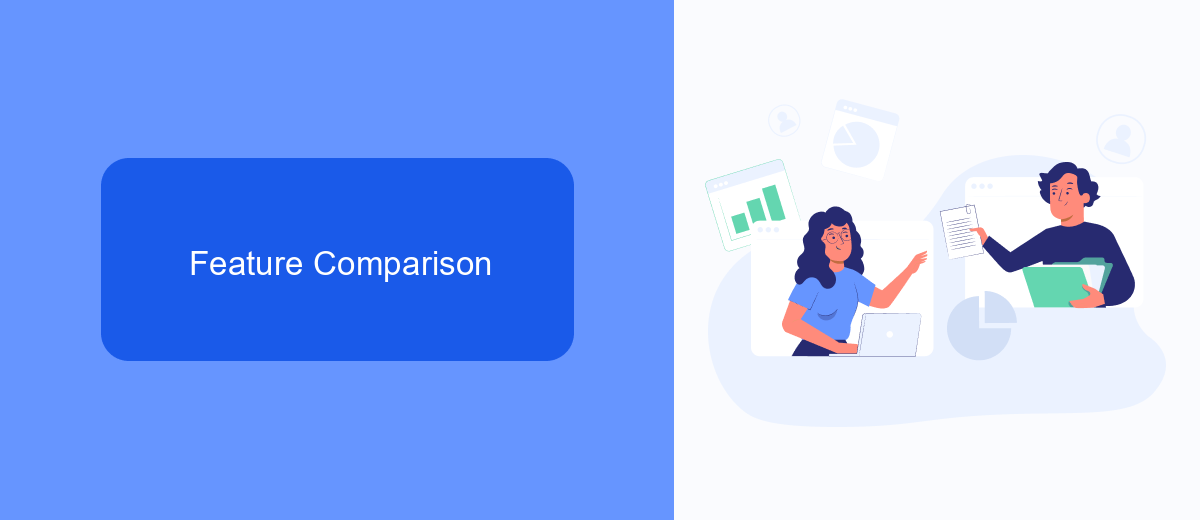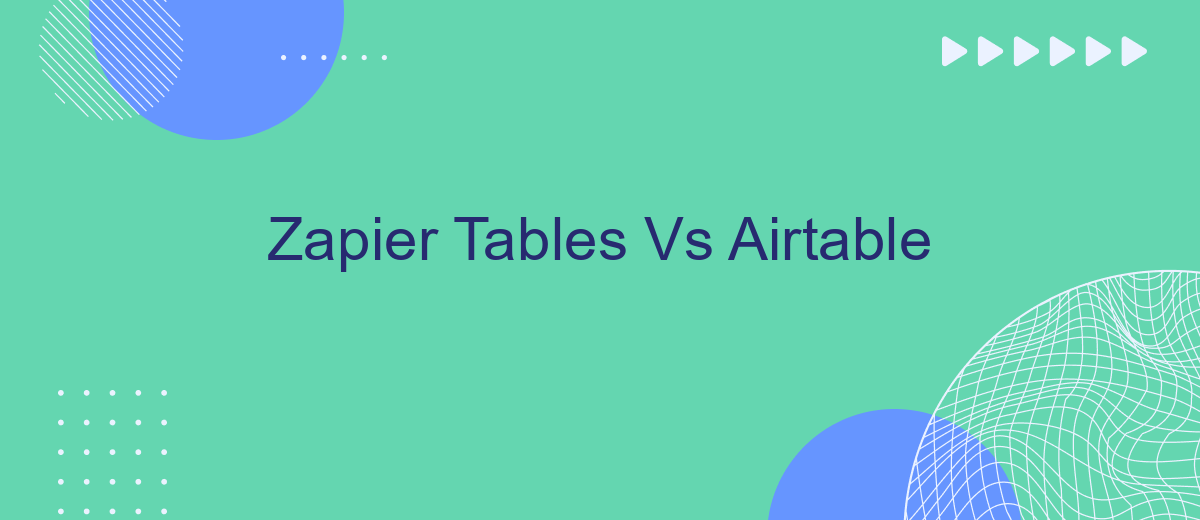When it comes to streamlining workflows and managing data, Zapier Tables and Airtable are two powerful tools that often come to mind. Both platforms offer unique features designed to enhance productivity and organization. In this article, we will compare Zapier Tables and Airtable, examining their strengths and weaknesses to help you decide which tool best suits your needs.
Introduction
In the evolving landscape of digital tools, managing data efficiently is crucial for businesses of all sizes. Two popular platforms that offer robust solutions for data organization are Zapier Tables and Airtable. Both tools are designed to streamline workflows and enhance productivity, but they cater to different needs and preferences.
- Zapier Tables: Ideal for automating tasks and integrating multiple apps.
- Airtable: Offers a more visually appealing interface with customizable databases.
Choosing the right tool depends on your specific requirements. While Zapier Tables excels in automation and seamless app integration, Airtable is favored for its user-friendly design and flexibility. Additionally, services like SaveMyLeads can further simplify the process by automating lead data collection and integration, ensuring that your workflows remain efficient and effective.
Feature Comparison

When comparing Zapier Tables and Airtable, the first notable difference is their approach to data management. Zapier Tables focuses on automating workflows by integrating with various applications, making it easier for users to create seamless processes without manual intervention. Airtable, on the other hand, offers a more flexible and visually appealing interface for organizing data, combining the simplicity of a spreadsheet with the functionality of a database. This makes Airtable particularly useful for project management, content planning, and collaboration.
Another key aspect to consider is the ease of integration. Zapier Tables excels in this area, thanks to its robust ecosystem of integrations with thousands of apps. For users looking to simplify the integration process further, services like SaveMyLeads can be invaluable. SaveMyLeads automates lead generation and data transfer between applications, enhancing the capabilities of Zapier Tables. Airtable also supports integrations, but users might find it less extensive compared to Zapier's offerings. Ultimately, the choice between Zapier Tables and Airtable will depend on whether you prioritize automation and integration or data organization and visualization.
Use Cases

When considering Zapier Tables and Airtable, it's essential to understand the specific use cases for each tool to make an informed decision. Both platforms offer unique features that cater to different needs, making them suitable for various applications.
- Project Management: Airtable excels in project management with its robust relational database capabilities, allowing teams to link records and manage complex projects efficiently.
- Automation and Integration: Zapier Tables, combined with Zapier's extensive automation capabilities, is ideal for businesses looking to streamline workflows and integrate multiple apps effortlessly.
- Data Collection and Analysis: For organizations focused on collecting and analyzing data, Airtable provides powerful tools for data visualization and reporting.
- Customer Relationship Management (CRM): Both platforms can serve as a CRM, but Zapier Tables, with its integration capabilities through services like SaveMyLeads, offers a seamless way to manage customer data across various platforms.
In summary, the choice between Zapier Tables and Airtable depends on your specific needs. If automation and integration are your primary concerns, Zapier Tables may be the better option. However, if you require advanced project management and data analysis features, Airtable might be the more suitable choice.
Pricing

When it comes to pricing, both Zapier Tables and Airtable offer various plans to cater to different needs and budgets. Zapier Tables, being part of the broader Zapier ecosystem, is often bundled with other automation tools, providing a comprehensive package for businesses looking to streamline their workflows.
Airtable, on the other hand, offers a more straightforward pricing structure with distinct tiers based on features and usage limits. This allows users to choose a plan that best fits their requirements without paying for unnecessary extras.
- Zapier Tables: Part of Zapier's paid plans, starting at .99/month.
- Airtable: Free plan available, with paid plans starting at /month per user.
- SaveMyLeads: Affordable integration service, starting at /month.
Choosing between Zapier Tables and Airtable ultimately depends on your specific needs and budget. If you require extensive automation capabilities, Zapier Tables might be the better choice. However, if you need a more traditional database solution with flexible pricing, Airtable could be more suitable. Additionally, services like SaveMyLeads can help you integrate these tools seamlessly, enhancing your overall productivity.
Conclusion
In conclusion, both Zapier Tables and Airtable offer robust solutions for managing and automating workflows. Zapier Tables excels in its seamless integration with a wide range of apps and services, making it an excellent choice for users who need to streamline complex processes across multiple platforms. On the other hand, Airtable stands out with its highly customizable interface and powerful database capabilities, ideal for teams that require detailed project management and data organization.
Choosing between Zapier Tables and Airtable ultimately depends on your specific needs and workflow requirements. For those who prioritize extensive integrations and automation, Zapier Tables might be the better option. If you need a more flexible and visually driven tool for project management, Airtable could be the way to go. Additionally, services like SaveMyLeads can further enhance your experience by simplifying the integration process, ensuring that your tools work together seamlessly to boost productivity.


FAQ
What are the main differences between Zapier Tables and Airtable?
Can I use Zapier Tables and Airtable together?
Which platform is better for project management?
How do I automate data transfers between Zapier Tables and Airtable?
Is there a learning curve for using Zapier Tables or Airtable?
You probably know that the speed of leads processing directly affects the conversion and customer loyalty. Do you want to receive real-time information about new orders from Facebook and Instagram in order to respond to them as quickly as possible? Use the SaveMyLeads online connector. Link your Facebook advertising account to the messenger so that employees receive notifications about new leads. Create an integration with the SMS service so that a welcome message is sent to each new customer. Adding leads to a CRM system, contacts to mailing lists, tasks to project management programs – all this and much more can be automated using SaveMyLeads. Set up integrations, get rid of routine operations and focus on the really important tasks.
